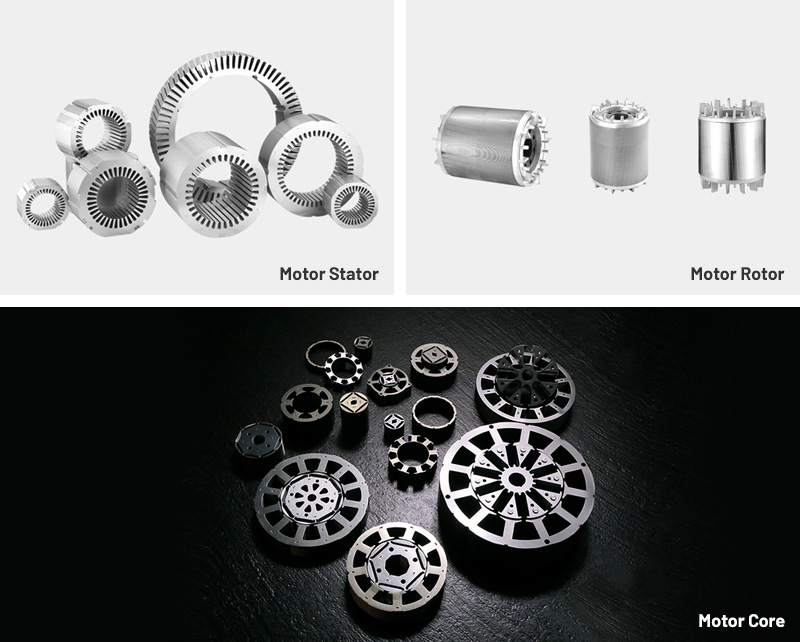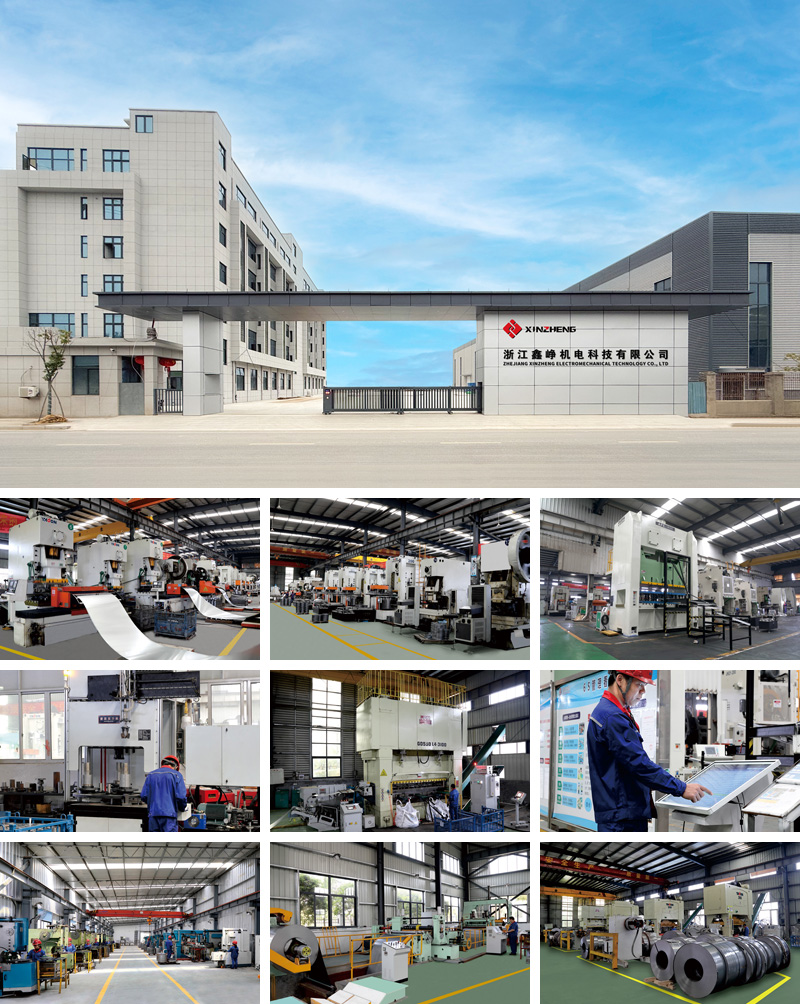The global demand for energy-efficient and high-performance electric motors has accelerated in recent years, driven by the proliferation of electric vehicles, industrial automation, renewable energy systems, and advanced robotics. In these applications, the efficiency, torque, and operational stability of motors are closely linked to the magnetic properties of their core components. motor laminations play a pivotal role in guiding magnetic flux, minimizing energy losses, and maintaining mechanical integrity.
High-permeability magnetic motor laminations have emerged as a critical solution to meet these demands. By optimizing the conduction of magnetic flux and reducing hysteresis and eddy current losses, these laminations enable motors to achieve higher efficiency and performance. As global efficiency standards become more stringent, manufacturers are increasingly prioritizing materials and laminations that enhance magnetic properties while maintaining structural precision.
Motor laminations are thin sheets of electrical steel assembled into stator and rotor cores. Their primary function is to direct magnetic flux efficiently while minimizing energy losses caused by eddy currents and hysteresis. The concept of high-permeability laminations focuses on enhancing the steel’s magnetic permeability, allowing magnetic flux to flow more easily with lower resistance.
Key technical principles include:
Magnetic Permeability Optimization: Materials with high permeability allow flux to pass through the core more efficiently, reducing energy losses and improving torque output.
Minimization of Eddy Currents: Laminations are insulated from one another to prevent circulating currents, which generate heat and decrease efficiency.
Dimensional Precision: Tight tolerances in lamination thickness, geometry, and stacking alignment ensure uniform air gaps and reduce magnetic saturation inconsistencies.
By combining high-permeability materials with precise manufacturing, motor designers achieve motors that deliver high performance with lower energy consumption and reduced heat generation.
High-permeability magnetic motor laminations are primarily made from:
Electrical Steel (Silicon Steel): Typically containing 2.5–3.5% silicon to reduce eddy currents and enhance magnetic permeability.
High-Performance Alloys: Nickel-iron and iron-cobalt alloys are used in specialized motors requiring higher saturation flux density and thermal stability.
Insulation Coatings: Laminations are coated with thermally stable, mechanically durable insulation to prevent inter-lamination currents and support long-term performance.
The laminations are designed for both mechanical stability and optimized magnetic pathways. Precision die-cutting or laser-cutting processes create uniform teeth, slots, and core shapes, reducing burr formation and edge defects. The flatness and orientation of each lamination are maintained to minimize vibrations and maintain air-gap consistency during motor operation.
High Magnetic Efficiency: Enhanced permeability allows more efficient flux conduction, reducing core losses and improving torque.
Reduced Eddy Current Losses: Insulated laminations prevent circulating currents that generate heat and lower efficiency.
Mechanical Stability: Laminations resist warping and deformation during assembly and high-speed operation.
Thermal Reliability: Insulation coatings and material selection maintain performance across temperature fluctuations.
Material Preparation: Electrical steel coils are inspected and rolled to precise thickness specifications.
Cutting: Advanced die-cutting or laser-cutting processes ensure minimal burrs and consistent geometry.
Annealing: Stress-relief heat treatment reduces residual mechanical stresses and preserves magnetic properties.
Insulation Application: Coatings are applied uniformly and cured to resist thermal and mechanical stress.
Stacking and Assembly: Laminations are carefully stacked into stator or rotor cores with precise alignment to ensure uniform air gaps and minimize vibration.
The performance of high-permeability magnetic motor laminations depends on several critical factors:
Material Purity and Alloy Composition: Impurities or inconsistent alloy content can reduce permeability and increase energy losses.
Dimensional Accuracy: Variations in lamination thickness or geometry lead to air-gap inconsistencies, affecting flux distribution and torque.
Insulation Quality: Defective or uneven coatings can create inter-lamination currents, resulting in heat generation and reduced efficiency.
Residual Stress: Poor annealing can leave laminations prone to warping, affecting magnetic alignment and performance.
Stacking Precision: Misaligned laminations amplify mechanical vibrations and compromise flux uniformity.
Selecting a reliable supplier ensures consistent quality and performance in high-permeability laminations:
Material Certification: Suppliers should provide detailed specifications of chemical composition, magnetic properties, and tensile strength.
Process Documentation: Transparency in cutting, annealing, and coating processes guarantees reproducibility.
Quality Assurance: Rigorous inspection protocols for flatness, dimensional tolerance, and insulation integrity are essential.
Production Capacity: Suppliers must consistently deliver batches that meet large-scale OEM requirements.
Compliance: Adherence to international standards and environmental regulations is critical for global applications.
Despite technological advancements, challenges remain in manufacturing high-permeability laminations:
High Manufacturing Costs: Precision materials, specialized tooling, and stringent quality control increase production expenses.
Dimensional Complexity: Thin, high-accuracy laminations are difficult to cut and stack without burrs or deformation.
Thermal and Mechanical Trade-offs: Balancing magnetic performance, structural stability, and thermal behavior requires careful engineering.
Supply Variability: Differences in steel quality, coating consistency, or annealing can lead to variations in motor efficiency.
High-permeability magnetic motor laminations are critical in applications where efficiency, torque, and reliability are essential:
Electric Vehicles (EVs): Traction and auxiliary motors benefit from reduced core losses and improved energy efficiency.
Industrial Automation: Motors in robotics, machine tools, and conveyors rely on high-permeability laminations for precise torque and reduced energy consumption.
Renewable Energy Systems: Wind turbine and hydroelectric generators require laminations that maintain efficiency under variable loads and thermal cycles.
Consumer Appliances: High-performance motors in HVAC systems and home appliances benefit from quieter operation and lower energy use.
Medical Equipment: Motors in imaging, laboratory, and diagnostic devices rely on efficient, low-heat laminations to maintain reliability.
The motor lamination industry continues to evolve through materials and process innovation:
Advanced Alloy Development: Nickel-iron and iron-cobalt alloys improve saturation flux density and thermal stability.
High-Performance Coatings: Inorganic and hybrid insulation coatings enhance mechanical damping and thermal resistance.
Precision Manufacturing: Laser cutting, EDM, and automated stacking increase dimensional accuracy, reduce burrs, and improve flatness.
Integrated Magnetic Design: Laminations are designed in concert with rotor and stator geometries to optimize efficiency and torque density.
Global Standardization: Industry-wide specifications ensure consistent performance across suppliers and geographies, supporting international OEM requirements.
Q: What are high-permeability magnetic motor laminations?
A: Laminations made from high-permeability materials, designed to reduce core losses, enhance flux conduction, and improve overall motor efficiency.
Q: How do they improve motor performance?
A: By allowing magnetic flux to flow more efficiently, minimizing hysteresis and eddy current losses, and maintaining consistent air gaps during operation.
Q: Are these laminations suitable for high-speed or high-torque motors?
A: Yes, they are engineered to maintain structural integrity, magnetic alignment, and thermal stability under demanding operational conditions.
Q: Do high-permeability laminations increase production cost?
A: While they involve higher material and manufacturing costs, the long-term benefits of improved efficiency, torque, and reliability outweigh initial expenses.
High-permeability magnetic motor laminations are essential components for energy-efficient, high-performance electric motors. By combining advanced materials, precise cutting, stress-relief processes, and durable insulation coatings, these laminations ensure enhanced magnetic flux conduction, reduced energy losses, and improved mechanical stability. Applications range from electric vehicles and industrial automation to renewable energy and medical equipment, where efficiency, reliability, and torque performance are paramount. Continuous innovation in materials, coatings, and manufacturing processes positions high-permeability laminations as a cornerstone of modern motor design, delivering superior performance, energy savings, and operational reliability in global markets.
Product Category

Comprehensive Strength


Copyright © Zhejiang Xinzheng Electromechanical Technology Co., Ltd. All Rights Reserved.
This website uses cookies to ensure you get the best experience on our website.